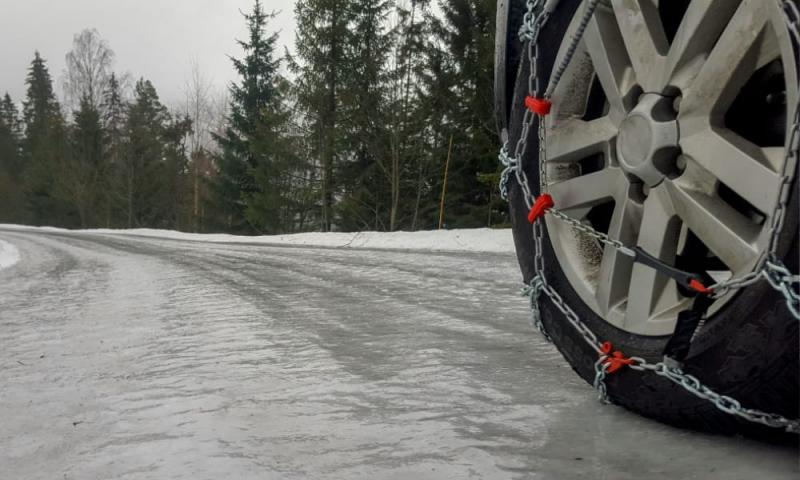New Management / Better Inventory / Better Attitude
Southern Oregon's Largest Independent Used Car Dealership
"The King of In-House Financing"
- Home
- Get Pre-Qualified
- Browse Autos InventoryPriceMakes
- Payments
- Services
- Company Info

Posted 1 year ago

Its that time of year again. Bust out the snow tires, chains, sandbags, shovels, etc. Winter driving brings a new set of conditions to take into account on the road. Slick surfaces, visibility, and inexperienced drivers are among the most important safety issues. Heres our tips on how to minimize dangerous situations on the road.
ODOT and Caltrans provide lots of information and photos of current road conditions and hazards. Save yourself time and frustration by checking out the road cams before you take off and all along your route.
If you’re lucky enough to have 4-wheel drive, it’s important to remember that you will need the same stopping distance as any other vehicle on the road. We’ve all seen the crazies who think they can drive at the usual speed limit when snow and ice are present. Sure they can, but can they stop? No. 4-wheel, all-wheel, and front-wheel drives take exactly the same amount of distance to come to a stop as a rear-wheel drive. Then add on the possibility of skidding. Gravity and physics have their own set of rules. Our tip is to put plenty of space between you and the crazies, and most definitely not being one of them yourself.
Be sure to pay attention to your vehicle’s antifreeze, battery, wiper fluid, lighter-weight oil, tire pressure and tread life, chains, and brakes. It’s a good idea to have your gas tank full when heading out. Car trouble any time is annoying, but in winter driving conditions, a breakdown can be extremely hazardous. Standing by the side of the Interstate on a nice sunny day, waiting for the tow truck, is one thing. Standing out in ice and snow is a whole new level of dangerous. And we all know what it’s like to have our own travel delayed by someone else’s accident or breakdown. Don’t be one of those guys either!
They’re BIG! They’re WORKING! Don’t get in their way, and especially DO NOT PASS THEM ON THE RIGHT. Ever. It’s illegal in the first place and puts you in real danger of hitting the plow blade or sliding off the road yourself. In foggy or white-out conditions, it’s really, really easy to come up behind one of them quickly. Which leads us to . . .
Slamming on the brakes in slick conditions will put you in a pretty much guaranteed out-of-control situation. Sometimes even tapping the brakes can be too much. Drivers need to increase their safe following distances and remember to TAP the brakes as gently as possible and only if absolutely necessary. A vehicle in a skid is unpredictable. DON’T SLAM ON THE BRAKES! Which then leads us to . . .
Again, no matter what you’re driving, turning the wheel too quickly is very dangerous in slippery conditions. Yanking the wheel is as hazardous as stomping on the brakes. Easy does it!
Everyone was/is new at driving at some point, so no harm, no foul. We have to remember that winter driving has a completely different set of skills to learn. If you’re inexperienced yourself, jump on YouTube to learn tips and techniques for avoiding or, heaven forbid, causing an accident. YouTube is no substitute for actual driving situations, but it’s a darn good start.

Yes, cars can hydroplane! This occurs in wet road conditions. It happens when the grooves in your tires fill up with water instead of pushing it away like they’re supposed to, and you end up with the flat parts of your tires riding on the surface of the water instead of on the asphalt, basically turning them into water skis. The faster you go, the more your car hydroplanes, losing contact with the road. Braking and steering require the road’s surface friction to do what they’re supposed to do, so slow down to keep control.

We have such great access to reliable road condition data now — especially with state road cams — that there are several GPS services like Waze and Google Maps that you can look at. But, we recommend state road cams (ODOT and Caltrans for Oregon and California) over other GPS services for being current and well-monitored.
When driving in winter weather, it’s a good idea to keep blankets, warm clothes, food, and water with you on your journey. Our weather and road alert systems work well, but storms can still take us by surprise. Be prepared in case accidents or sudden road closures keep you stuck out there without services and far from warmth and comfort. Those breakfast bars become gourmet meals during a long traffic delay. Might want to carry a deck of cards, too!
With the holiday season approaching, travel planning and safe driving play a huge role in visiting family and friends. The goal shouldn’t be to get there quick. The goal should be to get there. Safe. Period.